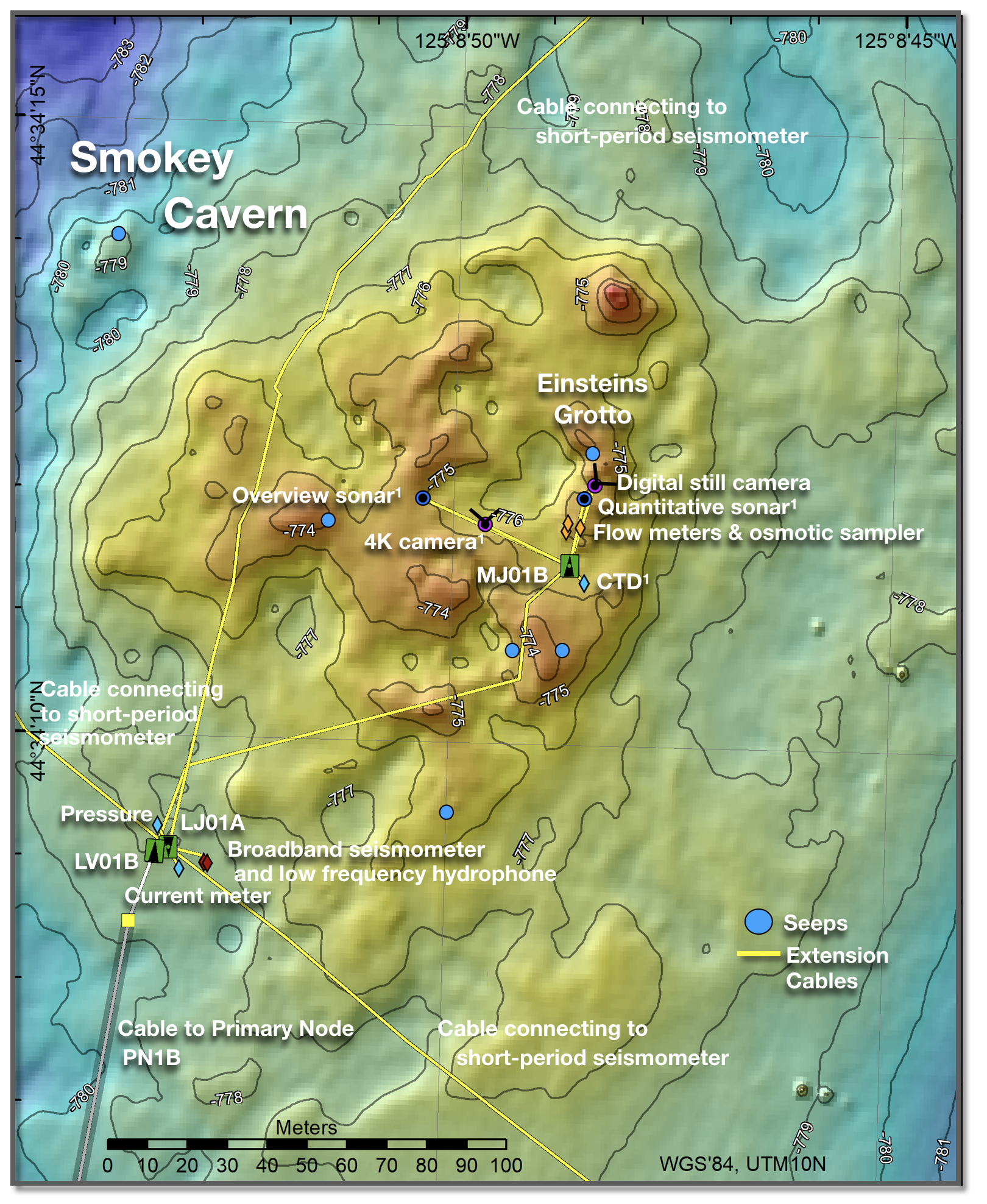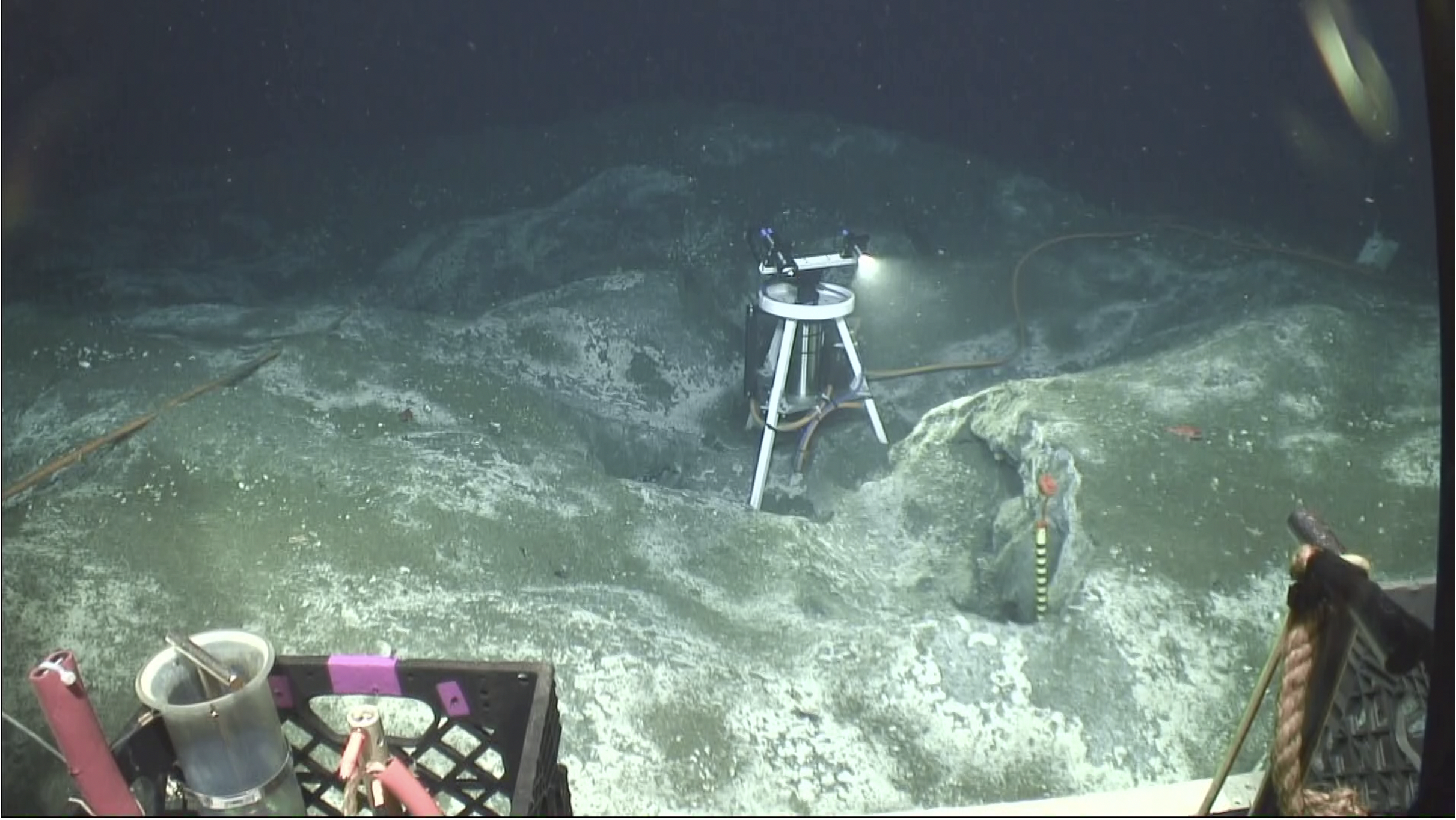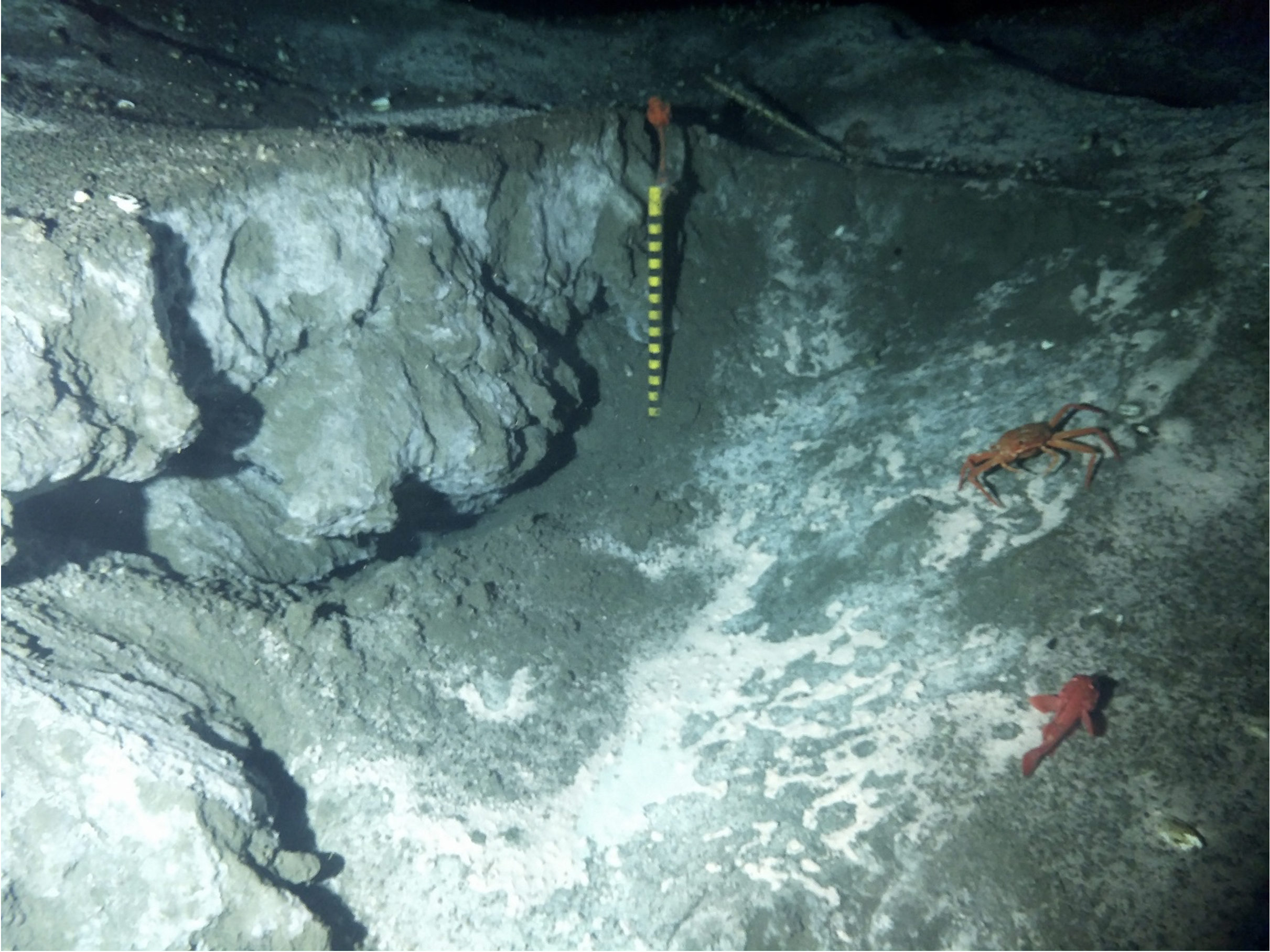MARUM Camera System

The MARUM Camera System was developed by Dr. Yann Marcon, Professor Gerhard Bohrmann, and a team of engineers at the MARUM Center for Marine Environmental Sciences and the Department of Geosciences, University of Bremen, Germany. It was funded by the German Federal Ministry of Education and Research (BMBF) within the scope of the “M³: Monitoring Marine Methane” projects (grants 03F0765A and 03F0854A). The MARUM Camera System focuses on the Summit-A vent site at the summit of Southern Hydrate Ridge. It monitors the short-term variability of methane bubble plumes and changes in the seafloor morphology related to the venting activity.
The MARUM Camera System is a 4K camera with a LED lamp mounted on a pan-tilt unit on a 1.3 m-high tripod (Figure 1). The camera can record 4K videos and 21 MP photographs.
The MARUM Camera System was set to record 30-second 4K videos bi-hourly and three consecutive stills every 30 minutes.
Access CAMPIA101 Data

